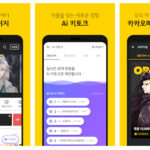
Despite its long history in the literary canon, many people considered the fantasy genre to be a niche interest until relatively recently. Thankfully, those days are long behind us. The immense popularity of series like HBO’s Game of Thrones and Netflix’s The Witcher prove that fantasy has gone mainstream. Fans want more fantasy stories, no matter the form they may take. Television, film, novels, comics—the options are limitless. More and more companies seek new properties to bring to eager audiences, which includes more works in translation as we see in the case of webtoons and Korean fantasy novels.
The Origins of the Modern Korean Fantasy Novel
Unlike the Western fantasy tradition, the modern Korean fantasy genre is relatively young. Its roots can be traced to online forums in the late 1990s when a young writer named Lee Yeongdo began posting chapters of a story that would eventually become the Dragon Raja series. Following a group of would-be heroes, the novels contain many elements familiar to Western readers: a dragon threatening the common people, a social structure similar to what existed in medieval Europe, and fantasy races like elves, dwarves, and orcs.
These parallels might surprise you, but there is a good reason for the similarities. Lord of the Rings served as a major inspiration for Dragon Raja. Isn’t it interesting that J.R.R. Tolkien’s most famous work influenced the epic fantasy genre on both sides of the Pacific Ocean? But while Tolkien’s most obvious legacy in the Western tradition is the now-ubiquitous trilogy structure that pervades the genre, his impact upon Korean fantasy novels rests more with the character archetypes and settings.
The comparisons, however, don’t end there. Dragon Raja‘s initial online serialization parallels the Western fantasy genre of the 1920s and 1930s. During this period, such stories were typically published in magazines. Conan the Barbarian, one of sword and sorcery’s most iconic heroes, made his debut during this so-called pulp era in Weird Tales. We see something similar in today’s market where digital formats have allowed many Korean writers to flourish. In fact, entire platforms have sprung up around Korean fantasy novels serialized online, such as the case of Legendary Moonlight Sculptor.
In addition, the massive popularity of Dragon Raja led to its eventual publication in print. While unique in the 1990s, many publishers utilize this model today. Authors may self-publish their novels via Amazon, only to later secure deals with traditional companies based in New York City. North American manga publishers release titles in digital format first and gauge sales to determine if a print edition would be profitable. Modern Korean fantasy titles, of course, continue to follow in Dragon Raja‘s footsteps. Series like Y.R. Shin’s Fallen Queen and Chugong’s Solo Leveling have not only made the transition from webnovel to print, but also crossed the Pacific Ocean to garner an English-language edition.
How Do Korean Fantasy Novels Differ from Their Western Counterparts?
Given how Dragon Raja helped shape the epic fantasy genre in Korea, the way it drew inspiration from Lord of the Rings led to many superficial similarities between the Korean and Western traditions. Even so, a few striking differences exist. In a 2009 interview on Naver, Lee Yeongdo said that the fantasy genre serves as an escape from our daily lives and that its novels should not be treated as allegories for real-world issues.
By contrast—perhaps due to its adjacent position to science fiction, which prides itself on exploring big ideas—the Western fantasy tradition often deals with real-world issues. The multi-Hugo award-winning author N.K. Jemisin regularly explores themes of oppression in her works. Even J.R.R. Tolkien wrote The Lord of the Rings partially because of his concerns about modernization and its effect upon society.
Despite the differences, readers of Western fantasy novels can find lots to enjoy in the Korean counterpart. The focus on adventure combined with familiar character archetypes can provide entertaining comfort reads. But this doesn’t mean the Korean fantasy genre has nothing new to offer English-language readers. Many series feature ideas revolving around transmigration and cultivation that are not as pervasive in the Western tradition and, therefore, will strike readers as original and interesting. And based on how young the Korean fantasy genre is, there is still a lot of innovation to come.












